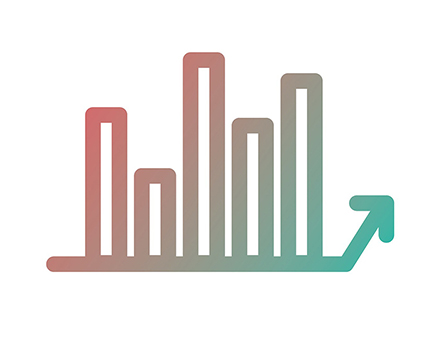SAM Magazine—Winter Park, Colo., July 16, 2025—The booking pace at Western mountain destinations ticked up slightly in June, the first such gain since last November. Revenues also posted a comfortable year-over-year increase. However, booking pace results were skewed by a drop in the number of available room nights. “When we simply count the number of room nights booked—called pure demand—pace was down,” said Tom Foley, senior vice president of business intelligence for Inntopia and author of its monthly Market Briefing.
However, booking pace results were skewed by a drop in the number of available room nights. “When we simply count the number of room nights booked—called pure demand—pace was down,” said Tom Foley, senior vice president of business intelligence for Inntopia and author of its monthly Market Briefing.
Data for the Briefing are drawn from DestiMetrics and represent activity for approximately 28,000 lodging units in 17 mountain destination communities across Colorado, Utah, California, Nevada, Wyoming, Montana, and Idaho. These units represent an aggregated 55 percent of all available rental units in those regions.
The most recent monthly Market Briefing released by Inntopia showed a positive upward shift in lodging activity for guests arriving between June 1 and Nov. 30. Properties in the moderately- and luxury-priced categories are faring better than economy-priced properties—a reversal from last month. Economy lodgings are currently dealing with a 7.8 percent decline in summer occupancy, along with a 5.3 percent decline in revenue.
The overall positive shift occurred even as international visits continued to decline in year-over-year comparisons. Visits from Canada dropped yet again and are now down 58.3 percent; Western Europe is down 39.2 percent. Mexico was flat after being up 6.5 percent in early June, and the Oceania region, including Australia and New Zealand, was down 20.5 percent.
For the month of June itself, actual occupancy moved up 2.6 percent compared to a year ago, while the average daily rate (ADR) edged up 0.8 percent. The combination yielded a 3.4 percent gain in aggregated revenue. In terms of pure demand, bookings made in June for June arrivals were up 1.2 percent compared to last June.
As of June 30, occupancy for the full summer from May through October was trending down 0.4 percent compared to last year, and pure demand was down 1.9 percent. Daily rates, on the other hand, were up four percent for the summer. Foley noted that, "with properties finding the right balance of rate and volume," revenues were up 2 percent for the summer.
In a first look at July results, Foley noted that the three-day July 4 weekend saw bookings rise 4.8 percent. However, the raw number of bookings for the full month have been tracking down 1.7 percent, he said.
The changing number of available rental units makes it difficult to track the strength of actual demand, Foley noted. "There is always some fluctuation in available inventory,” he added. He told SAM that a significant portion of the change in June—1.5 percent fewer room nights available than a year earlier—was due to owners using the units themselves. "When we look at total data, which includes owners, guests of owners, and other unpaid stays," the decline disappears, and overall demand looks stronger.
Whatever the actual demand, ADR continued to strengthen. Lodging operators saw the strongest seasonal gain in the ADR since April 2023. While absolute demand is down, suggesting some rate intolerance among some consumers—others, particularly those in the luxury category, are still booking.





